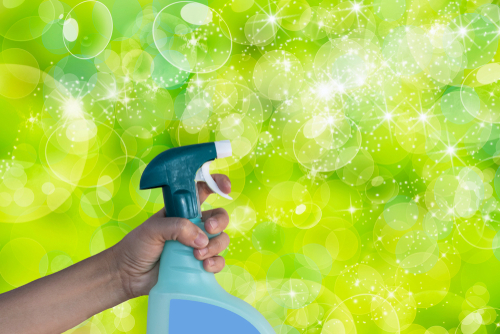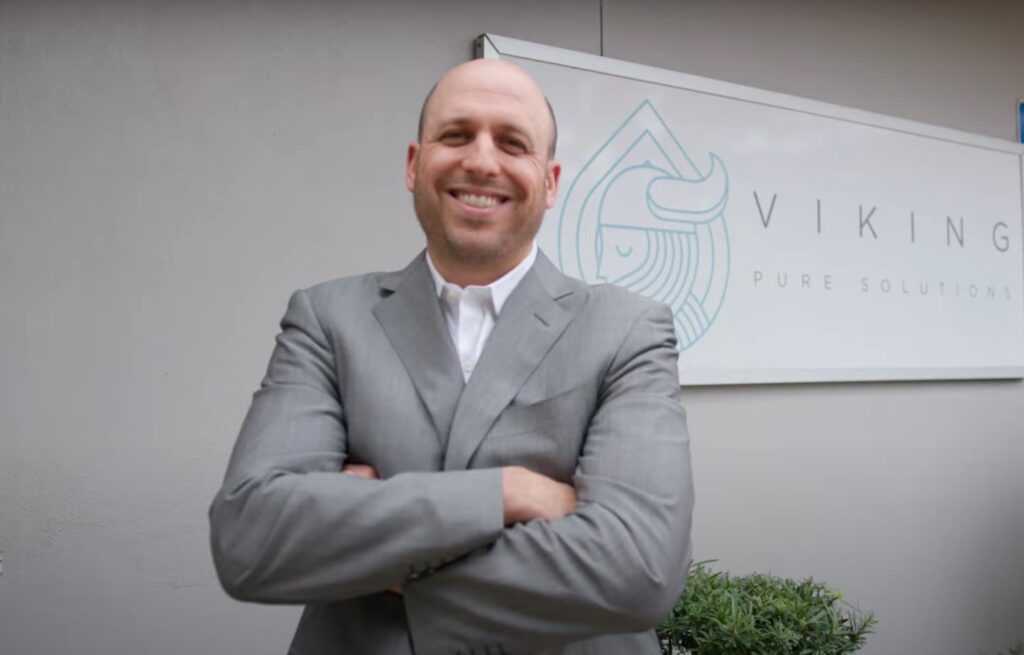In recent years, facilities managers have been increasingly tasked with making their operations not only more efficient but also more environmentally friendly. One area that has garnered attention is the adoption of green cleaning products. Across multiple industries, there is a growing recognition of the benefits that come with this strategy—including a healthier workforce, cleaner environment, and significant savings that positively impact a business’s bottom line.

This article will explore some of those savings and detail the other benefits, focusing on chemical consolidation and standardization, reducing workers’ compensation claims, improving productivity, and reducing liabilities. Additionally, we’ll delve into the importance of avoiding “greenwashing” and choosing truly eco-friendly products through third-party certifications.
Chemical Consolidation and Standardization
One of the biggest cost-saving opportunities that comes with switching to green cleaning products is the potential for chemical consolidation. In traditional cleaning setups, facilities often have a wide array of specialized chemicals for different surfaces and tasks, leading to an expansive and often redundant inventory. This complexity increases the chances of misuse or cross-contamination, leading to higher operational and training costs.
Going green can allow facilities to consolidate their chemical arsenal. Many green cleaners are designed for multi-purpose use, reducing the need for a long list of specialized products. With fewer products in use, it’s easier to standardize procedures across teams and locations. This, in turn, cuts down on training time, as staff only need to learn how to use a few versatile products rather than dozens of specialized ones.
Cost-Saving Impact:
- Reduced Inventory Costs: Less storage space is needed for chemicals, and purchasing fewer specialized cleaners often results in cost savings over time.
- Shorter Training Time: With fewer chemicals to learn, staff can be trained faster, reducing downtime and associated costs.
- Less Waste: Consolidating products means using inventory more efficiently, minimizing expired or unused stock.
Greenwashing and the Importance of Third-Party Certifications
As the demand for eco-friendly products has grown, so too has the phenomenon of “greenwashing”—when companies deceptively market their products as environmentally friendly without meeting true sustainability standards. This can lead to facilities unknowingly using products that claim to be green but still contain harmful chemicals.
To avoid greenwashing, facilities managers should rely on trusted third-party certifications such as Green Seal and the U.S. Environmental Protection Agency’s (EPA) Safer Choice label. These certifications provide transparency, ensuring that products meet rigorous health and environmental criteria. For example, Green Seal evaluates products based on toxicity, biodegradability, and packaging, while the Safer Choice label ensures products are formulated with safer chemicals for both users and the environment.
By choosing certified green products, facilities managers can rest assured they are making a responsible choice that benefits both their employees and the planet.
Cost-Saving Impact:
- Reduced Risk of Regulatory Fines: Using products with certified safety profiles can help facilities comply with environmental and occupational safety regulations, reducing the risk of fines or penalties.
- Enhanced Reputation: Adopting certified green products can improve a company’s brand image and appeal to eco-conscious clients and stakeholders.
Greener Products Mean Safer Workers
One of the most compelling reasons to switch to green cleaning products is that they are typically safer for the people who use them. Traditional cleaning chemicals can expose workers to a range of health risks, leading to increased workers’ compensation claims and lost productivity due to sick days.
Although it’s not necessarily true for all green cleaning products, most are generally formulated to be non-toxic and biodegradable, which means fewer harmful fumes, less risk of chemical burns, and a reduced likelihood of allergic reactions. The use of safer, non-hazardous products can significantly lower the number of workplace injuries or illnesses.
Cost-Saving Impact:
- Fewer Workers’ Compensation Claims: Safer products mean fewer accidents and injuries, leading to reduced workers’ compensation claims and related expenses.
- Decreased Absenteeism: Healthier working conditions reduce the number of sick days, keeping workers on the job and boosting productivity.
Long-Tail Cost Savings from Improved Worker Productivity
The benefits of green cleaning products extend beyond the immediate safety of workers—simply put, healthier employees are also more productive. Studies have shown that indoor air quality can significantly affect cognitive function and job performance. The reduced fumes and airborne chemicals associated with green cleaning products lead to better air quality, creating a more pleasant and safer working environment for both cleaning staff and building occupants.
Additionally, by simplifying the cleaning process through chemical consolidation, cleaning staff can complete tasks more efficiently. With fewer products to manage and apply, cleaning processes can be streamlined, allowing staff to cover more ground in less time. This productivity boost is an often-overlooked long-tail saving, as small efficiencies add up over time.
Cost-Saving Impact:
- Higher Worker Morale: A safer work environment can improve job satisfaction, leading to higher retention rates and lower recruitment costs.
- Increased Cleaning Efficiency: Simplified procedures and reduced training times mean cleaning staff can be more productive in their daily tasks.
Reduced Liability and Legal Exposure
Using traditional, potentially hazardous cleaning products exposes facilities to a range of legal risks. Workers who suffer from chemical exposure or accidents can file lawsuits or workers’ compensation claims, and improper handling of hazardous materials could lead to regulatory penalties.
Most green cleaning products, being inherently safer, help reduce these liabilities. By removing many of the toxic chemicals from the workplace, facilities can lower the chances of chemical spills, accidental exposure, or unsafe disposal practices, which in turn reduces the risk of legal actions or regulatory fines.
Facilities that adopt greener products also position themselves to meet evolving regulations. Many governments are increasingly requiring or incentivizing the use of eco-friendly cleaning products in public buildings. By getting ahead of these types of requirements now, facilities can avoid costly compliance issues in the future.
Cost-Saving Impact:
- Reduced Legal Fees: Fewer incidents related to chemical exposure or environmental harm translate into fewer legal battles and lower insurance premiums.
- Regulatory Compliance: Green products may help facilities meet local and federal environmental standards, reducing the risk of costly fines.
Addressing the Cost of Cleaning
One of the common arguments against switching to green cleaning products is the perception that they cost more. While it’s true that some green products may have a higher purchase price than their traditional counterparts, the long-tail savings more than compensate for the initial investment.
When facilities factor in the reduced need for multiple chemicals, the lower risk of workers’ compensation claims, improved worker productivity, and reduced legal liabilities, the cost-benefit analysis strongly favors green products. Furthermore, some green products can be produced on-site at the end facility, creating additional opportunities for cost savings. Electrolyzed water technology, which creates a sodium hydroxide multipurpose cleaner and hypochlorous acid disinfectant, is one example of green cleaning products that can reduce long-tail costs by consolidating chemicals.
Facilities managers should take a holistic view of their operations and not consider only the upfront cost of green products, but also the operational efficiencies and risk reductions they bring over time.
The Future of Cleaning Is Green
Switching to green cleaning products is not just a trendy choice; it’s a smart, cost-effective decision with far-reaching financial and environmental benefits. From reducing workers’ compensation claims to improving productivity, green cleaning products offer a range of long-tail cost savings that most traditional chemical cleaners simply can’t match.
Moreover, by avoiding greenwashing and choosing products certified by third-party organizations like Green Seal, facilities managers can ensure they are using truly environmentally friendly products. These greener solutions not only protect the planet but also create a safer, more productive work environment for everyone involved.
In the long run, the move to green cleaning is not just good for the earth—it’s good for your bottom line.

Joshua Schwartz is the president and co-founder of green cleaning product company Viking Pure Solutions. This article is for informational purposes only and should not be considered health or legal advice.
